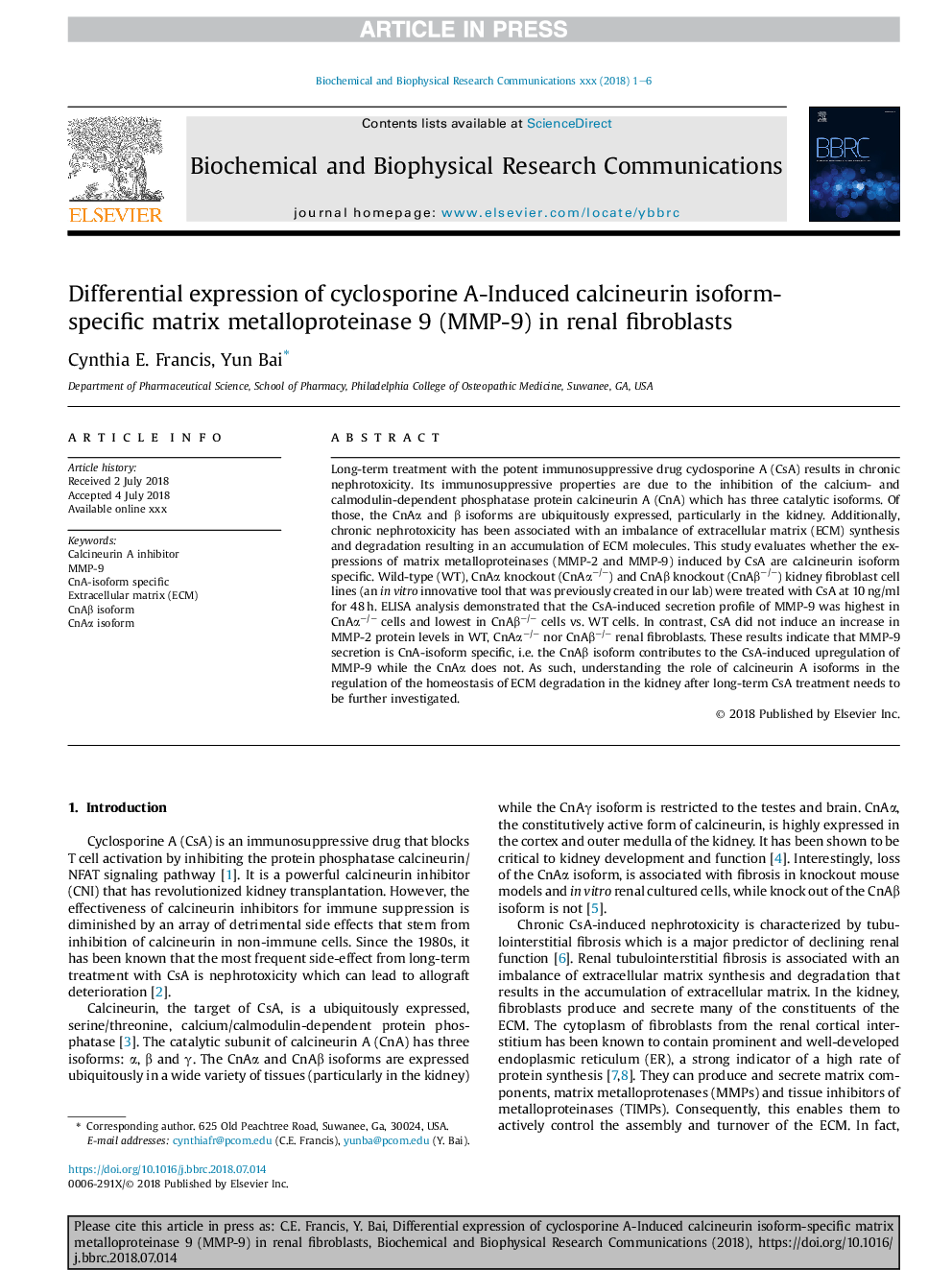| Article ID | Journal | Published Year | Pages | File Type |
|---|---|---|---|---|
| 8961825 | Biochemical and Biophysical Research Communications | 2018 | 6 Pages |
Abstract
Long-term treatment with the potent immunosuppressive drug cyclosporine A (CsA) results in chronic nephrotoxicity. Its immunosuppressive properties are due to the inhibition of the calcium- and calmodulin-dependent phosphatase protein calcineurin A (CnA) which has three catalytic isoforms. Of those, the CnAα and β isoforms are ubiquitously expressed, particularly in the kidney. Additionally, chronic nephrotoxicity has been associated with an imbalance of extracellular matrix (ECM) synthesis and degradation resulting in an accumulation of ECM molecules. This study evaluates whether the expressions of matrix metalloproteinases (MMP-2 and MMP-9) induced by CsA are calcineurin isoform specific. Wild-type (WT), CnAα knockout (CnAαâ/â) and CnAβ knockout (CnAβâ/â) kidney fibroblast cell lines (an in vitro innovative tool that was previously created in our lab) were treated with CsA at 10â¯ng/ml for 48â¯h. ELISA analysis demonstrated that the CsA-induced secretion profile of MMP-9 was highest in CnAαâ/â cells and lowest in CnAβâ/â cells vs. WT cells. In contrast, CsA did not induce an increase in MMP-2 protein levels in WT, CnAαâ/â nor CnAβâ/â renal fibroblasts. These results indicate that MMP-9 secretion is CnA-isoform specific, i.e. the CnAβ isoform contributes to the CsA-induced upregulation of MMP-9 while the CnAα does not. As such, understanding the role of calcineurin A isoforms in the regulation of the homeostasis of ECM degradation in the kidney after long-term CsA treatment needs to be further investigated.
Keywords
Related Topics
Life Sciences
Biochemistry, Genetics and Molecular Biology
Biochemistry
Authors
Cynthia E. Francis, Yun Bai,
